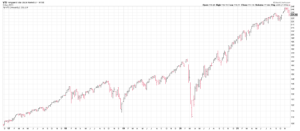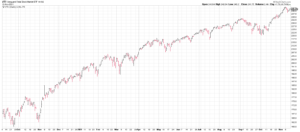MARKET RECAP
While the overall US stock market is still a little bit off its highs, the S&P 500 managed to close at an all-time high on Friday, helped by Apple, which was up by 2.8% on Friday, 10.88% for the week, 21.32% for the month and 36.07% year-to-date. Apple is now selling at 32x earnings, as recently as January of 2019 it was on sale at 12.5x earnings and in 2016 at 10x earnings. For the week, US stocks increased by 3.61% and international by 2.55%.
The market rallied this week as the Omicron variant does not appear as dangerous as initially feared, and as investors don’t seem worried about the long-term risk of inflation, with the 10-year treasury rate at 1.49%. That doesn’t appear to make sense, as the latest CPI report shows prices rising by 6.8% over the last 12-months. The biggest increase in 39 years. The general consensus is that inflation will drop to the 2.5 to 3% range by the end of next year. Five-year TIPS currently imply an inflation rate of 2.8%.
The market is pricing in three 1/4% increases in interest rates in 2022, in June, September and December.
MARKET RECAP












